26 September 2023: Clinical Research
Navigating Health Literacy and Practices: A Cross-Sectional Study on Nursing Undergraduates in Riyadh, Saudi Arabia
Omaimah A. Qadhi1ABCDEFG*, Gada Khalid Albothi1ABCDEFG, Reem Fallatah1ABCDEFG, Maryam Anazi1ABCDEFG, Mahmood Basil A. Al-Rawi2ABCDEFG, Wajid Syed3ABCDEFGDOI: 10.12659/MSM.941632
Med Sci Monit 2023; 29:e941632
Abstract
BACKGROUND: This study aimed to assess the health literacy (HL) and health practices (HP) among nursing undergraduates at King Saud University in Riyadh, Saudi Arabia.
MATERIAL AND METHODS: A cross-sectional survey-based study was conducted in 2023 to assess how nursing students perceive HL and HP. HL is the ability of individuals to acquire, interpret, assess, and act on information to promote and maintain good health, while HP involves the application of knowledge and skills. HL was assessed using a total of 16 items, subdivided into 4 domains (understanding, evaluating, accessing, and utilizing health information) while HP was assessed using 11 items on a 5-point Likert scale.
RESULTS: In this study, 53.9% of the students were found to have poor HP, while 40.9% (n=166) reported moderate HP, and 5.2% (n=21) reported good HP. With regards to HL, 38.9% (n=158) of students were found to have good HL while 52.2% (n=212) reported moderate HL, and 8.9% (n=36) reported poor HL. The findings indicated that there was a relationship between age and HP, indicating that age is a major predictor of HP (P=0.001). Other comparisons, including year of study, income source, marital status, and the prevalence of chronic conditions, were discovered to have a significant relationship (P=0.001) with HP levels.
CONCLUSIONS: According to these findings, most students reported poor HP, while one-third claimed good HL. Therefore, there is a need to address the factors related to poor HP while also recommending methods to support good HP among students.
Keywords: Adolescent Health Services, Drug Prescriptions, Health Literacy, Nursing Assessment, Outcome Assessment, Health Care, Humans, Saudi Arabia, Cross-Sectional Studies, Income, Students, Nursing
Background
Health literacy (HL) is an important factor in health equity, since it is defined as the ability of individuals to acquire, interpret, assess, and act on information to promote and maintain good health throughout their lives. Because of a decrease in HL and an increase in potentially lethal treatment effects, HL has become a global public health concern and is therefore becoming a more valuable asset [1,2]. Promoting HL is a public health goal that has a significant impact on health and well-being of populations in developed and developing countries; low HL is also becoming a source of concern for healthcare authorities [1,2]. Broadly, HL is described as people’s knowledge and skills in obtaining, understanding, evaluating, and applying health information to make health-related decisions, or in disease prevention and health promotion, to preserve or improve their quality of life [3,4]. Health practice (HP) involves the application of scholarship, knowledge, and skills, for example, eating healthy food and regular physical activity [5].
HL empowers people to make better decisions about their health and well-being (for example, individuals with good HL can make good decisions about their medication management [6]), and according to HL, medication management is a self-care habit connected with successful treatment. However, HL has a significant impact on whether patients understand the prescription medicine, how to take it, and the adverse effects [6,7]. Higher levels of HL lead to a better understanding of health, lower healthcare costs, and less strain on the health system, while lower levels of HL deliver sub-optimal clinical outcomes, waste precious health resources, rely more heavily on treatments rather than prevention, and use emergency services more frequently [8].
Having low HL is a result of the health system not meeting the needs of the people [9]. Consequently, the aims of advancing HL and HP in Saudi Arabia include the safe use of medications, better health outcomes, and proper utilization of health resources and services [9,10]. On the other hand, HP also appears to have an impact on self-rated health and global quality of life [9–11]. A promising policy tool to boost HL principles in healthcare systems is to incorporate HL measures into the accreditation of healthcare providers. There are 3 different categories of health literacy: functional, interactive, and critical literacy [12]. Numerous studies [12–14] have been conducted to gauge the effects of HL on both individuals and society.
According to the literature, the worldwide level of HL is insufficient [15–19], although the levels of HL and HP varied depending on the population being investigated and patient sex. For example, preliminary research has found that nearly half of the world’s population (46%) has limited HL [15]. Other statistics from the Saudi population revealed that 54.4% of Saudis lack HL [16]. Age, sex, and education of individuals were correlated with HL. Earlier research, however, has demonstrated that healthcare students have insufficient HL [17–21]. For example, a previous study showed 21.5% of Namibian nursing students studied revealed moderate HL [2], whereas a subsequent study revealed that medical students had the greatest HL and nursing students had the lowest HL [18]. Similarly, a further investigation concluded that nursing students’ HL was influenced by their age, sex, and year of study [19]. One study revealed that the HL level of nursing students increased from the first to fourth year [20], implying that the year of study has a substantial impact on the levels of HL. Another study found differences in HL profiles of nursing students at universities in different regions; specifically, there were differences in students’ ability to find good health information by region [21].
Several health management behaviors, including medication adherence, counseling, and knowledge of potential drug interactions, are supported by healthcare professionals, such as nurses, who also provide direct patient care. Additionally, nurses assist patients in identifying potential drug interactions to lessen the possibility of drug-related issues that could result in life-threatening diseases [22,23].
To effectively counsel patients and promote health literacy, healthcare professionals in various practice settings need to be on alert [22,23]. For instance, one study showed a strong correlation between clinical nurses’ patient-centered care and their HL skills [24]. Additionally, nursing care practice entails giving patients conventional nursing care, such as medicine as prescribed by a doctor, helping with health-related decisions, and giving patients tailored care while taking into account their unique needs and features [25,26]. Therefore, it is essential to evaluate the nurse’s clinical expertise and HL. Nurses, who are frequently the first healthcare professionals that patients consult for assistance, are crucial to the safe and effective use of pharmaceuticals and healthcare services. Furthermore, today’s students are tomorrows professionals, who needed to exhibit sound HL and experience before graduation to receive excellent grades, as well as to deliver high-quality healthcare services on the job. There has already been published research on how well people in the general population understand HL and HP. We are unaware of any research that has been done on Saudi undergraduate nursing student’s perceptions of HP and HL. Therefore, the present study aimed to assess the HL and HP among nursing undergraduates at King Saud University in Riyadh, Saudi Arabia.
Material and Methods
ETHICS APPROVAL AND INFORMED CONSENT:
Before the study began, the Ethics Committee at King Saud University’s College of Medicine reviewed the study protocol and questionnaires, and the study was approved by King Saud University’s Institutional Review Board (IRB project No. E-23-8008). The students provided informed consent. Students were advised that their participation was entirely voluntary. Furthermore, students were informed that their confidentiality and anonymity would be maintained throughout the study. Students who completed the consent form were invited to participate in the study.
STUDY DURATION, DESIGN, AND POPULATIONS:
A cross-sectional paper-based survey of male students enrolled in the College of Nursing at King Saudi University Riyadh, Saudi Arabia, was undertaken from April to June 2023. Students over the age of 18 years who completed the informed consent form, stated a desire to participate in the survey, and attended class regularly were included. Students from other fields and those who did not meet the inclusion criteria were excluded from the study.
SAMPLE SIZE ESTIMATION:
Currently, there are about 500 residential students enrolled in the nursing program at the King Saud University campus in Riyadh, Saudi Arabia. Similar to previous studies [27–29], we used a 95% confidence interval (CI) and a 5% predetermined margin of error to calculate the necessary sample size using the Rao soft sample size calculator. A 218-person sample was thought to be sufficient.
QUESTIONNAIRE DESIGN:
After the authors reviewed the available literature regarding the understanding of HL and HP [2,3], they created the questionnaire that was used in this study. The questionnaire included 33 items in total, divided into 3 sections. The first section comprised 6 questions on the demographics and personal characteristics of the students, including their year of study, grades, sources of income, and history of chronic illnesses. The second section comprised 16 questions about HL and was further subdivided into 4 parts. Part 1 asked students about understanding health information, such as the ability to understand treatment prescriptions, health diagnosis information, test results, and written health information (4 items). Part 2 was about evaluating health information and consisted of questions about selecting appropriate health-related information, evaluating the usefulness of health information, making informed healthcare decisions, and interpreting medical test results (4 items). Part 3 collected information about access to health information: being able to regularly search for health information, being motivated to search for health information, being able to access health information, and being able to consult healthcare providers when in doubt (4 items). Part 4 of the second section concerned HL, or utilizing health information: one can seek health care promptly in response to any changes in health status, correctly carry out healthcare orders outside the health facility, can comply with treatment, and can recognize changes in their health status (4 items). All items of the second section were measured on a binary scale, yes/no. The third and final section of the survey comprised 11 HP questions about the frequency of eating a balanced diet, smoking, exercising, sleeping status, getting support when stressed, seeking health care when ill, and receiving routine medical examinations. These HP questions were evaluated on a 5-point Likert frequency scale (always/often/sometimes/rarely/never).
A group of professionals (an assistant professor in nursing and a senior researcher from the College of Pharmacy) with experience in creating surveys reviewed the created survey items, which were validated for content and ease of use. In addition, a pilot study was conducted among randomly chosen pharmacy students (n=30) to estimate survey time and assure questionnaire readability and ease of administration. Their opinions and perspectives regarding the survey were gathered, and adjustments were made accordingly. The final analysis did not incorporate the pilot study’s findings. According to the pilot study, it took an average of 8 min to finish the questionnaire. The Cronbach alpha value, which was used to determine the questionnaire’s reliability, was 0.80, indicating that it was trustworthy for use in the study.
DATA COLLECTION AND MEASUREMENTS:
Data were collected by printed questionnaires, written as described above. Students were randomly invited to participate in the study. We contacted students in their free time before lectures, invited them to participate, and provided them with a summary of the study aims. All respondents signed an informed consent form before proceeding with the research; the questionnaire was done under the supervision of a primary investigator. The mean score was computed for HP by assigning the scores for each item using a Likert scale: a score of 5 for always, 4 for often, 3 for sometimes, 2 for rarely, and 1 for never. The mean score was computed by combining all 11 items. The mean score for HP was further divided into 3 levels: good for scores of 44–55, moderate for scores of 33–43, and poor for scores of 11–32
STATISTICAL ANALYSIS:
The descriptive analysis was conducted to assess the frequencies (n) and percentages (%), which were calculated for each demographic and HL and HP item. The mean scores were computed for each domain and categorized into 3 different levels. The categorical variable was analyzed using the chi-square and Fisher exact test. SPSS version 26.0 (IBM Corp, Armonk, NY, USA) was used to evaluate the data, and a
Results
CHARACTERISTICS OF THE POPULATION:
A total of 406 students completed the survey. The mean age of the students was 21.35 (±1.14) years and most were single 79.1% (n=321). Third-year students made up 37.4% (n=152) of the sample, and fourth-year students made up 34.7% (n=141). Almost half of the students (n=205) claimed that their source of income was their parents. According to findings, most (89.2%, n=362) students stated that they were free of chronic disease. The mean grade point average in the last semester was 3.75±0.86. (median 4.00). A detailed description of the respondents’ characteristics is shown in Table 1.
UNDERSTANDING HEALTH INFORMATION:
In the present study, most students (n=337, 83%) agreed that having HL means one could understand treatment prescriptions, while 76.8% agreed HL means one can interpret medical diagnosis information. Two-thirds of 264 students (65%) agreed that HL means one can interpret medical test data. Furthermore, a substantial number of the students (293/72.2%) agreed that HL means one could understand written health education.
EVALUATING HEALTH INFORMATION: In terms of evaluating health information, more than two-thirds of the students believed that HL means one could choose appropriate health-related information. A substantial proportion of undergraduate students agreed with the assertion that HL entails being able to assess the usefulness of health information, while 79.1% of students believed that having HL involves being able to make educated healthcare decisions (Table 2).
ACCESS TO HEALTH INFORMATION:
Among the students, 289 (69.5%) agreed that HL means being able to regularly search for health information, whereas 124 (30.5%) did not agree. Moreover, 316 (77.8%) were aware that HL means being motivated to search for health information, while 323 (79.6%) realized that HL means being able to regularly access health information. In addition, 246 (60.6%) students were aware that HL means being able to consult health care providers when in doubt.
UTILIZING HEALTH INFORMATION: Overall, 238 students (58.6%) thought that HL means being able to seek healthcare as soon as there was a health status change. A total of 270 (66.5%) students believed that HL involves being able to carry out healthcare orders correctly outside of a health facility. A substantial number of students, 333 (82%), were aware that HL implies having the ability to adhere to treatment. Finally, 319 students (78.6%) agreed that HL involves being able to notice changes in one’s health state (Table 2).
HEALTH PRACTICES: In this study, 46.3% of students reported always consuming a balanced diet, more than one-third (146, 36%) reported frequently smoking, and more than one-quarter (116, 28.6%) reported frequently sleeping at least 8 h per night. One-third of students (133, 32.8%) reported always exercising, and a comparable percentage of students reported always finishing their prescribed medication. More than one-third of 137 (33.7%) undergraduate students reported that they always exchange health-related information. In terms of medical checkups, 146 (36%) reported always having yearly routine checkups. Furthermore, 131 (32.2%) students reported always seeking medical attention when they are ill (Table 3).
In this study, the mean HP score was 37.55±11.181(SD). However, 53.9% of the students were found to have scores indicating poor HP, while 40.9% (n=166) had scores indicating moderate HP, and only 5.2% (n=21) had scores indicating good HP, as shown in Table 4. The detailed score distributions for each HP item are shown in Table 5. With regards to HL, 38.9% (n=158) of students were found to have good HL, while 52.2% (n=212) reported moderate HL, and 8.9% (n=36) reported poor HL, as shown in Table 6. The detailed score distributions for each HL item are shown in Table 7.
The associations between students’ HP scores with factors such as age, year of study, marital status, source of income, and presence of disease were determined using chi-square and Fisher exact tests at the <0.05 level (Table 8). Results showed that age had a significant association with HP level (P<0.001), suggesting that age is a significant predictor of the level of HP score. Also, other comparisons, such as HP level with year of study, source of income, marital status, and presence of chronic diseases, had a significant associations (P<0.001). The associations between knowledge score and respondents’ demographics are shown in Table 8.
Discussion
In this study, we assessed the HL and HP among nursing undergraduates at Saudi University in Riyadh, Saudi Arabia, since most of the earlier literature reported was among the general population. We found 2 studies on HL and HP among nursing undergraduates regionally [30,31]. The present study will significantly increase healthcare students’ awareness, progress Saudi Arabia’s healthcare delivery to patients, community members, and hospital and clinical settings, and act as a resource for crucially needed future research. Most of questions in the HL part were correctly answered, indicating that the nursing students had a good level of knowledge, with an overall mean score of 11.67, a median score of 12.00 out of a maximum score of 16. However, according to the findings, just over half of students (52.2%) had moderate HL levels, while 38.9% of students had good HL. Munangatire et al reported in a previous study among nursing students that 21.5% of the respondents had moderate levels of HL, while 76.5% had adequate HL. Furthermore, previous findings reveal that nursing students understand the concept of HL more than they possess HL skills [2].
HL and HP are essential for every individual to obtain good health, and poor HL significantly negatively affects the quality of life of individuals. Maintaining good HL and HP is a multi-disciplinary approach and is necessary from the start of graduation from university, particularly for healthcare workers, such as nurses, who collaborate with other professionals and patients to give the best possible treatment. Furthermore, nurses are essential in this process since they are in charge of ensuring that patients receive adequate medication counseling and that their medications are adminsitered appropriately to treat their condition. As a result, nursing students must have a strong foundation of understanding of HL and healthcare. Therefore, the purpose of this study was to assess nursing students’ grasp of HL and HP at King Saud University in Riyadh, Saudi Arabia. According to the findings, 40.9% of students had moderate HP.
Similarly, another recent study conducted among students in healthcare by Mullan et al showed that medical students consistently had the highest scores for 7 of the 9 HL measures, while nursing students consistently had the lowest scores for each scale [18]. This difference in HL skills in the present study compared with that of prior studies could be attributed to differences in the entry qualification required for the programs in their various nations, as well as the students’ year of study. It could also be because the nursing students in our study were undergraduate-entry students who had recently finished high school before enrolling in university. Our findings suggested that more and better HL training for nursing health professionals is required.
The second section of our questionnaire was designed to evaluate HP. In this study, the overall HP score was 37.55±11.18 (median 35) out of a possible score of 55. Based on the number of questions correctly answered, most respondents had fundamental healthcare knowledge, such as having a balanced diet, getting help when stressed, and engaging in physical activity. In this study, 40.9% of the nursing undergraduates reported moderate HP, which is in contrast to earlier studies reported among nursing students in which there were moderate to high HP levels concerning eating, exercise, and smoking behavior [32,33]. However, students in the present study did not show comprehensive HP in terms of taking advice when they were stressed (27.8% of the students seeking help when they are stressed) and getting adequate sleep. Smoking was reported higher among students, with 24.4% of students reporting they always smoke, and 36% reporting they often smoke. The HL and HP scores varied widely among the studied undergraduates, with HL scores generally high and HP scores often low. The present findings imply that nursing students must not only grasp the HL as professionals but also develop HP abilities for their own use. Previous studies have found a link between HL and HP [34,35]. Individuals with low HL, for example, have poor health habits [36]. This confirms our contention that there is a distinction between comprehending HL as a health professional and possessing HL skills as an individual. Nursing students can thus comprehend HL and assist patients in developing HL and HP abilities.
Therefore, knowledge and training about HL and HP are vital for health professionals, particularly for students who will become professionals, to better communicate and improve patient healthcare outcomes, since most of the time, patients would not have adequate literacy to read about and understand their treatment and outcomes [18,35–38,]. While the necessity of including HL in health professional courses is becoming increasingly well recognized [18,37], there is little information about the disparities in HL knowledge among student groups in Saudi Arabia and other countries. Our findings reveal that students of different ages and years of study have diverse HL profiles. Furthermore, our data imply that nursing students have limited HL and HP. As a result, the current findings imply that teaching these HL and HP skills to nursing students could be beneficial.
The present study had certain limitations. First, the fact that the results were based on a self-administered survey may have raised the likelihood of biases, such as social desirability bias or recollection bias. Second, the findings are not representative of other groups and cannot be applied globally, because they were obtained from a single Saudi Arabian institute. Third, the study did not involve students from other disciplines, as it was conducted among nursing students of the university, given the greater accessibility to students while distributing the questionnaire. Despite these drawbacks, our research reveals that to increase the competency of health college students in promoting public health, more attention needs to be placed on growing awareness of HL skills and their implications as well as on the understanding of good HP. Therefore, there is a need for additional research that can assess how healthcare students perceive HL and HP. Furthermore, this study can be used as a solid foundation for domain-specific research.
Conclusions
According to our findings, students reported a low level of HP, while one-third reported a good understanding of HL. Furthermore, there is a need to address the factors related to poor HP while also recommending methods to support good HP among students. In addition, age, year of study, and presence of chronic diseases was significantly associated with HP. Therefore, it is important to encourage young adults, directly after graduation from university, to adopt healthy practices. To provide exceptional patient-centered care and successfully manage their own and patients’ health, future health professionals must have a high level of HL. Therefore, HL training modules should be included in university-based health professional degree programs, tailored to the diverse needs of the student groups.
Tables
Table 1. Descriptive statistics of the sample characteristics (n=406). Table 2. Students’ responses towards health literacy (HL).
Table 2. Students’ responses towards health literacy (HL).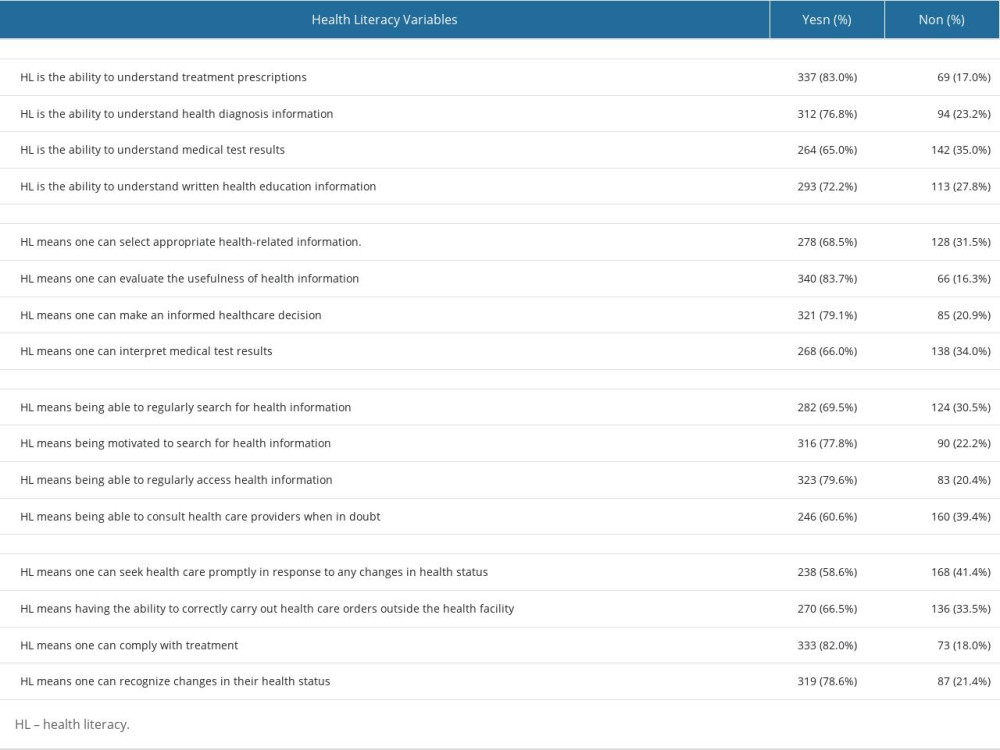 Table 3. Students’ responses toward health practice.
Table 3. Students’ responses toward health practice.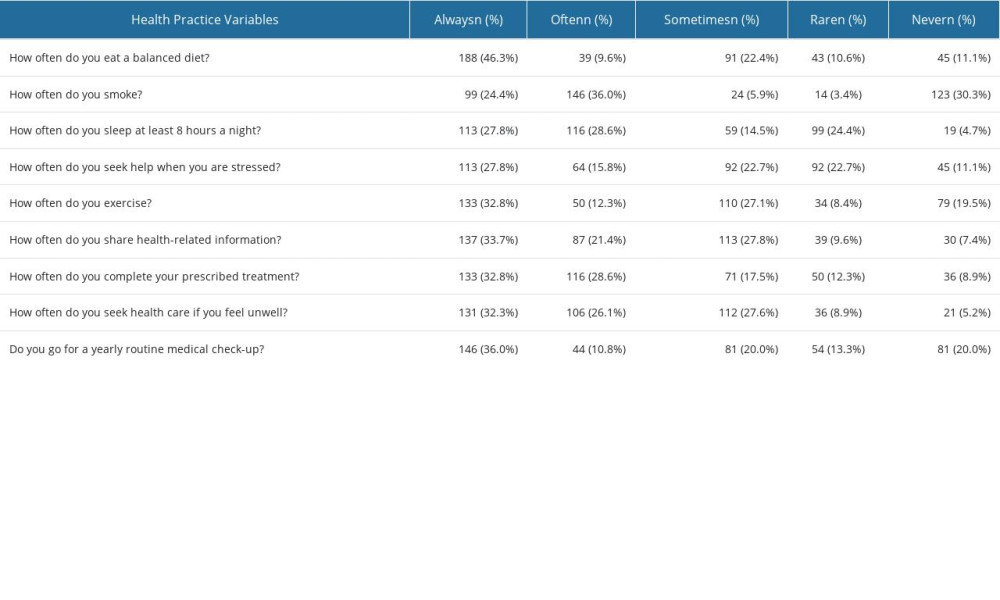 Table 4. Health practice score categories.
Table 4. Health practice score categories.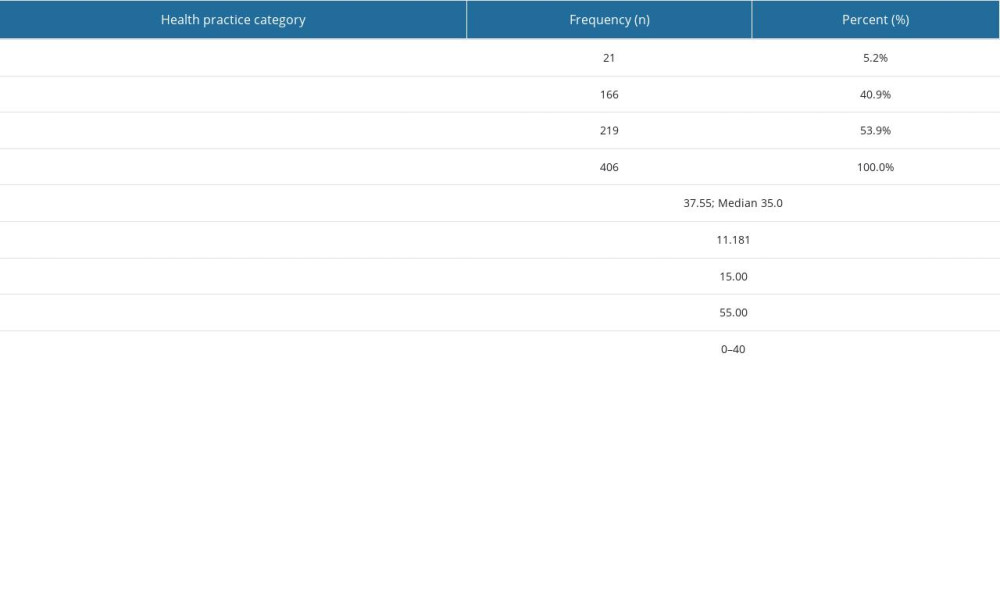 Table 5. Health practice score distribution among the study population.
Table 5. Health practice score distribution among the study population.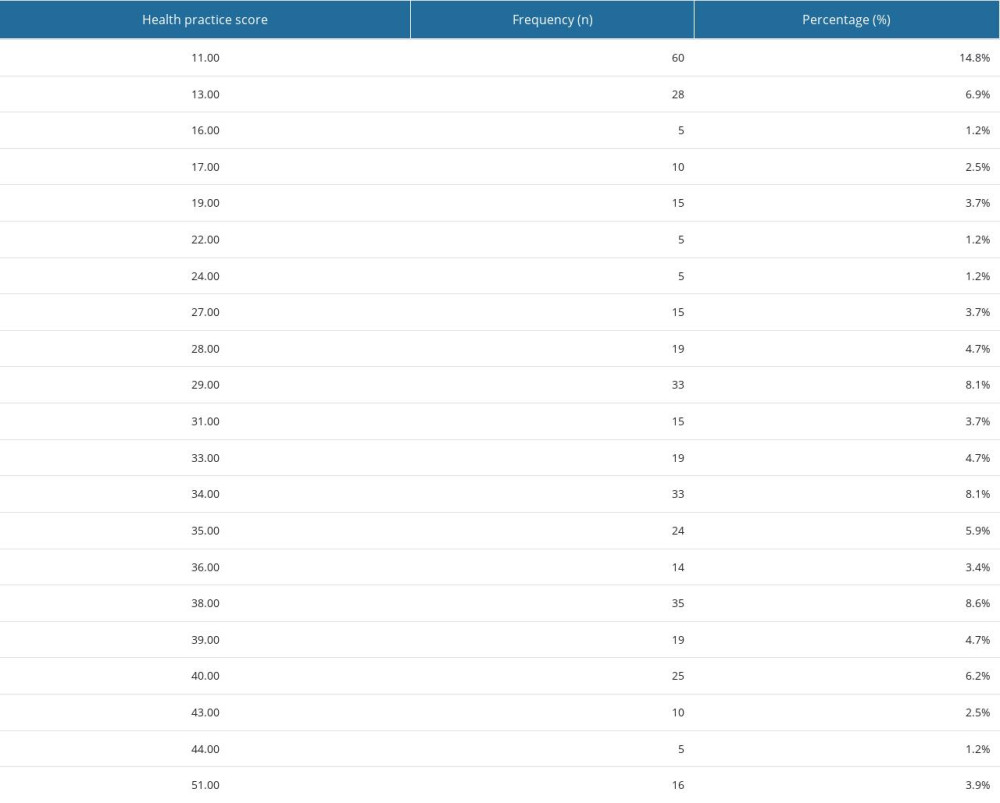 Table 6. Frequency of health literacy levels.
Table 6. Frequency of health literacy levels.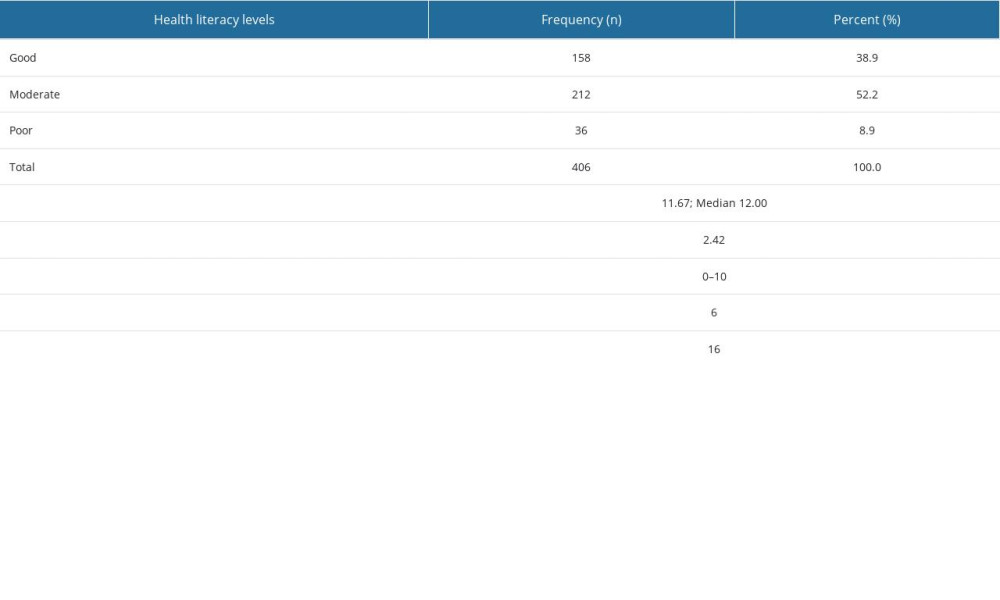 Table 7. Health literacy score distribution among the study population.
Table 7. Health literacy score distribution among the study population.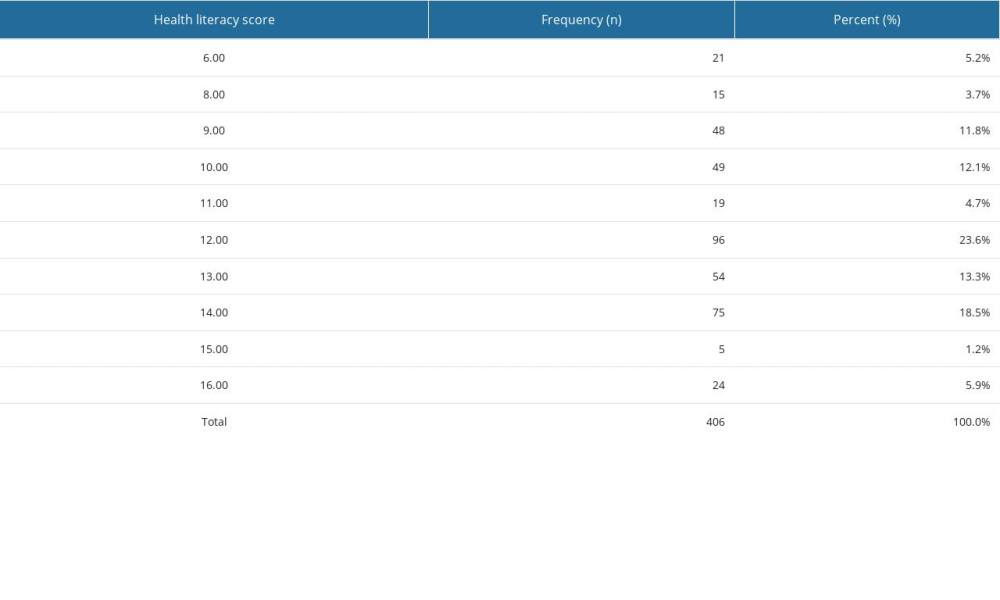 Table 8. Association between students’ health practice (HP) scores and demographics.
Table 8. Association between students’ health practice (HP) scores and demographics.
References
1. Sørensen K, Van den Broucke S, Fullam J, Health literacy and public health: A systematic review and integration of definitions and models: BMC Public Health, 2012; 12; 80
2. Munangatire T, Tomas N, Mareka V, Nursing students’ understanding of health literacy and health practices: A cross-sectional study at a university in Namibia: BMC Nurs, 2022; 21(1); 8
3. Mosley CM, Taylor BJ, Integration of health literacy content into nursing curriculum utilizing the health literacy expanded model: Teach Learn Nurs, 2017; 12(2); 109-16
4. Ratzan SC, Parker RM: Health literacy National library of medicine current bibliographies in medicine Feb, 2000, Bethesda, National Institutes of Health, US Department of Health and Human Services
5. Maclean H, Glynn K, Cao Z, Personal health practices: BMC Womens Health, 2004; 4(Suppl 1); S4
6. Balay-Odao EM, Alquwez N, Alsolami F, COVID-19 crisis: Influence of eHealth literacy on mental health promotion among Saudi nursing students: Journal of Taibah University Medical Sciences, 2021; 16(6); 906-13
7. Atal S, Sadasivam B, Ahmed SN, Medication concordance in modern medicine – a critical appraisal from an Indian perspective: J Family Med Prim Care, 2019; 8(4); 1313-18
8. Haun JN, Patel NR, French DD, Association between health literacy and medical care costs in an integrated healthcare system: A regional population based study: BMC Health Serv Res, 2015; 15; 249
9. Hickey KT, Masterson Creber RM, Reading M, Low health literacy: Implications for managing cardiac patients in practice: Nurse Pract, 2018; 43(8); 49-55
10. Eldooma I, Maatoug M, Yousif M, Pharmaceutical care within community pharmacies: Tools availability and pharmacists’ views, Wad-Medani, Sudan: Integr Pharm Res Pract, 2023; 12; 37-47
11. Lu J, Sun S, Gu Y, Health literacy and health outcomes among older patients suffering from chronic diseases: A moderated mediation model: Front Public Health, 2023; 10; 1069174
12. Walters R, Leslie SJ, Polson R, Establishing the efficacy of interventions to improve health literacy and health behaviours: A systematic review: BMC Public Health, 2020; 20(1); 1040
13. Sentell T, Zhang W, Davis J, The influence of community and individual health literacy on self-reported health status: J Gen Intern Med, 2014; 29(2); 298-304
14. Shahid R, Shoker M, Chu LM, Impact of low health literacy on patients’ health outcomes: A multicenter cohort study: BMC Health Serv Res, 2022; 22(1); 1-9
15. Paasche Orlow MK, Parker RM, Gazmararian JA, The prevalence of limited health literacy: J Gen Intern Med, 2005; 20(2); 175-84
16. Alahmadi YM, Evaluation of health literacy and associated factors among adults living in Saudi Arabia: A cross-sectional study: Inquiry, 2023; 60; 469580231161428
17. Protheroe J, Whittle R, Bartlam B, Health literacy, associated lifestyle and demographic factors in adult population of an English city: A cross-sectional survey: Health Expect, 2017; 20(1); 112-19
18. Mullan J, Burns P, Weston K, Health literacy amongst health professional university students: A study using the Health Literacy Questionnaire: Educ Sci, 2017; 72; 54
19. Ozkaya B, Investigation of health literacy levels of nursing students and affecting factors: Int J Caring Sci, 2019; 12(1); 270-79
20. González-López JR, de los Angeles Rodríguez-Gázquez M, Do health literacy levels of nursing students change throughout the study programme? A cross-sectional study: BMJ Open, 2022; 12(1); e047712
21. Balmer D, King A, Moloney W, Nursing students and health literacy: The effect of region and programme level: Nurse Educ Pract, 2020; 42; 102688
22. Kwame A, Petrucka PM, A literature-based study of patient-centered care and communication in nurse-patient interactions: Barriers, facilitators, and the way forward: BMC Nurs, 2021; 20(1); 158
23. Syed Snr W, Bashatah A, Al-Rawi AMB, Evaluation of knowledge of food–drug and alcohol–drug interactions among undergraduate students at king Saud University – an observational study: J Multidiscip Healthc, 2022; 15; 2623-33
24. Yang Y, Effects of health literacy competencies on patient-centered care among nurses: BMC Health Serv Res, 2022; 22(1); 1172
25. Suhonen R, Leino-Kilpi H, Valimaki M, Development and psychometric properties of the individualized care scale: J Eval Clin Pract, 2005; 11(1); 7-20
26. Bolster D, Manias E, Person-centered interactions between nurses and patients during medication activities in an acute hospital setting: qualitative observation and interview study: Int J Nurs Stud, 2010; 47(2); 154-65
27. Samreen S, Siddiqui NA, Mothana RA, Prevalence of anxiety and associated factors among pharmacy students in Saudi Arabia: A Cross-Sectional Study: Biomed Res Int, 2020; 2020; 2436538
28. Samreen S, Siddiqui NA, Wajid S, Prevalence and use of dietary supplements among pharmacy students in Saudi Arabia: Risk Manag Healthc Policy, 2020; 13; 1523-31
29. Samreen S, Sales I, Bawazeer G, Assessment of beliefs, behaviors, and opinions about blood donation in Telangana, India – a cross sectional community-based study: Front Public Health, 2021; 9; 785568
30. Abdel-Latif MM, Saad SY, Health literacy among Saudi population: A cross-sectional study: Health Promot Int, 2019; 34(1); 60-70
31. Almubark R, Basyouni M, Alghanem A, Health literacy in Saudi Arabia: Implications for public health and healthcare access: Pharmacol Res Perspect, 2019; 7(4); e00514
32. Bashatah A, Nutritional habits among nursing students using Moore Index for Nutrition Self Care: A cross-sectional study from the nursing school Riyadh, Saudi Arabia: Nurs Open, 2020; 7(6); 1846-51
33. Nevins CM, Sherman J, Self-care practices of baccalaureate nursing students: J Holist Nurs, 2016; 34(2); 185-92
34. Kolnik TŠ, Hozjan D, Babnik K, Health literacy and health related lifestyle among nursing students: Nursing in the 21st Century, 2017; 16(2); 42-46
35. Alsubaie MS, Salem OA, Nurses’ perception of health literacy: Ann Med Health Sci Res, 2019; 9; 716-22
36. Lee HY, Rhee TG, Kim NK, Health literacy as a social determinant of health in Asian American immigrants: Findings from a population-based survey in California: J Gen Intern Med, 2015; 30(8); 1118-24
37. Coleman CA, Teaching health care professionals about health literacy: A review of the literature: Nurs Outlook, 2011; 59; 70-78
38. Toronto CE, Weatherford B, Registered nurses’ experiences with individuals with low health literacy: A qualitative descriptive study: J Nurs Prof Dev, 2016; 32; 8-14
Tables
 Table 1. Descriptive statistics of the sample characteristics (n=406).
Table 1. Descriptive statistics of the sample characteristics (n=406). Table 2. Students’ responses towards health literacy (HL).
Table 2. Students’ responses towards health literacy (HL). Table 3. Students’ responses toward health practice.
Table 3. Students’ responses toward health practice. Table 4. Health practice score categories.
Table 4. Health practice score categories. Table 5. Health practice score distribution among the study population.
Table 5. Health practice score distribution among the study population. Table 6. Frequency of health literacy levels.
Table 6. Frequency of health literacy levels. Table 7. Health literacy score distribution among the study population.
Table 7. Health literacy score distribution among the study population. Table 8. Association between students’ health practice (HP) scores and demographics.
Table 8. Association between students’ health practice (HP) scores and demographics. In Press
08 Mar 2024 : Animal Research
Modification of Experimental Model of Necrotizing Enterocolitis (NEC) in Rat Pups by Single Exposure to Hyp...Med Sci Monit In Press; DOI: 10.12659/MSM.943443
18 Apr 2024 : Clinical Research
Comparative Analysis of Open and Closed Sphincterotomy for the Treatment of Chronic Anal Fissure: Safety an...Med Sci Monit In Press; DOI: 10.12659/MSM.944127
08 Mar 2024 : Laboratory Research
Evaluation of Retentive Strength of 50 Endodontically-Treated Single-Rooted Mandibular Second Premolars Res...Med Sci Monit In Press; DOI: 10.12659/MSM.944110
11 Mar 2024 : Clinical Research
Comparison of Effects of Sugammadex and Neostigmine on Postoperative Neuromuscular Blockade Recovery in Pat...Med Sci Monit In Press; DOI: 10.12659/MSM.942773
Most Viewed Current Articles
17 Jan 2024 : Review article
Vaccination Guidelines for Pregnant Women: Addressing COVID-19 and the Omicron VariantDOI :10.12659/MSM.942799
Med Sci Monit 2024; 30:e942799
14 Dec 2022 : Clinical Research
Prevalence and Variability of Allergen-Specific Immunoglobulin E in Patients with Elevated Tryptase LevelsDOI :10.12659/MSM.937990
Med Sci Monit 2022; 28:e937990
16 May 2023 : Clinical Research
Electrophysiological Testing for an Auditory Processing Disorder and Reading Performance in 54 School Stude...DOI :10.12659/MSM.940387
Med Sci Monit 2023; 29:e940387
01 Jan 2022 : Editorial
Editorial: Current Status of Oral Antiviral Drug Treatments for SARS-CoV-2 Infection in Non-Hospitalized Pa...DOI :10.12659/MSM.935952
Med Sci Monit 2022; 28:e935952








